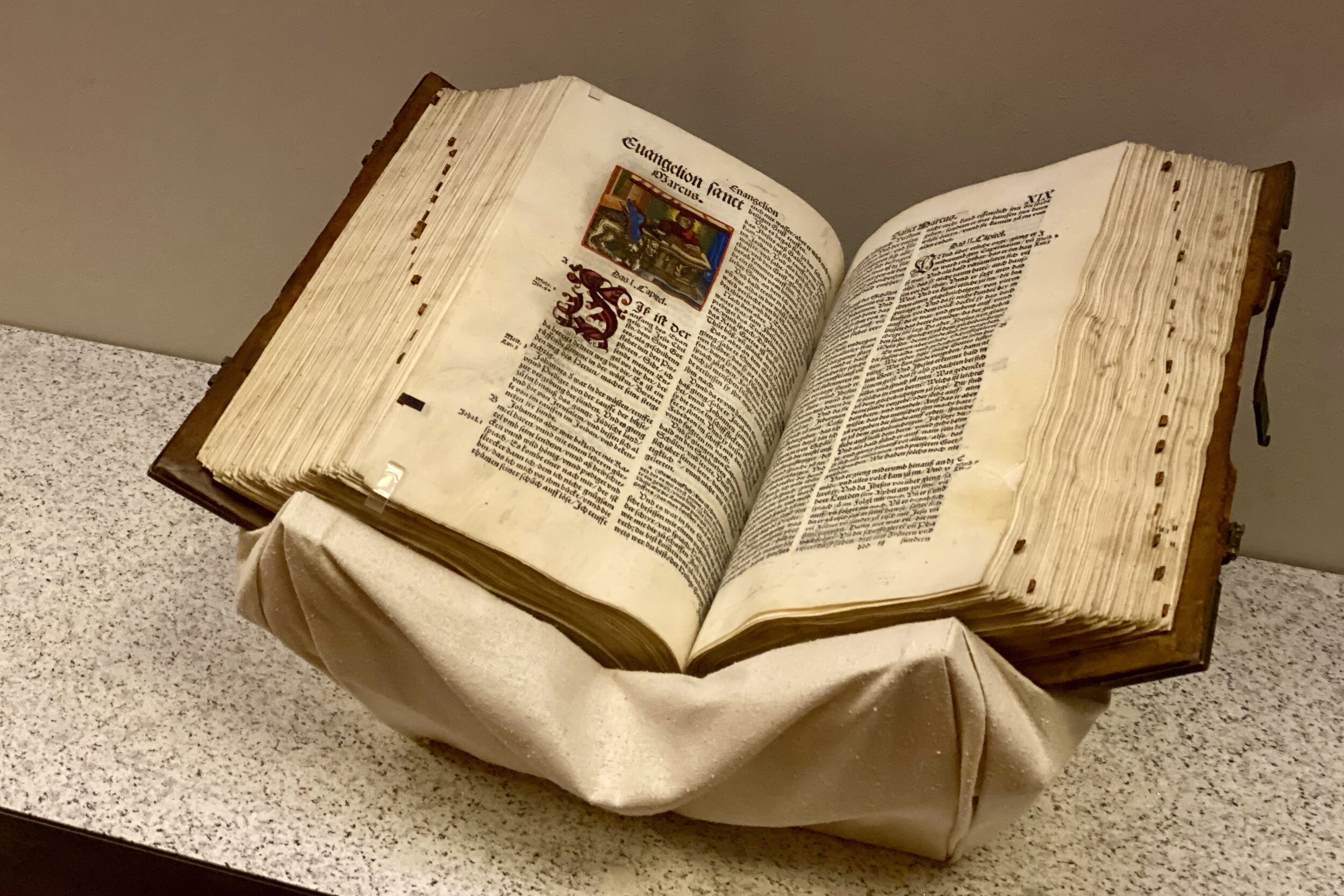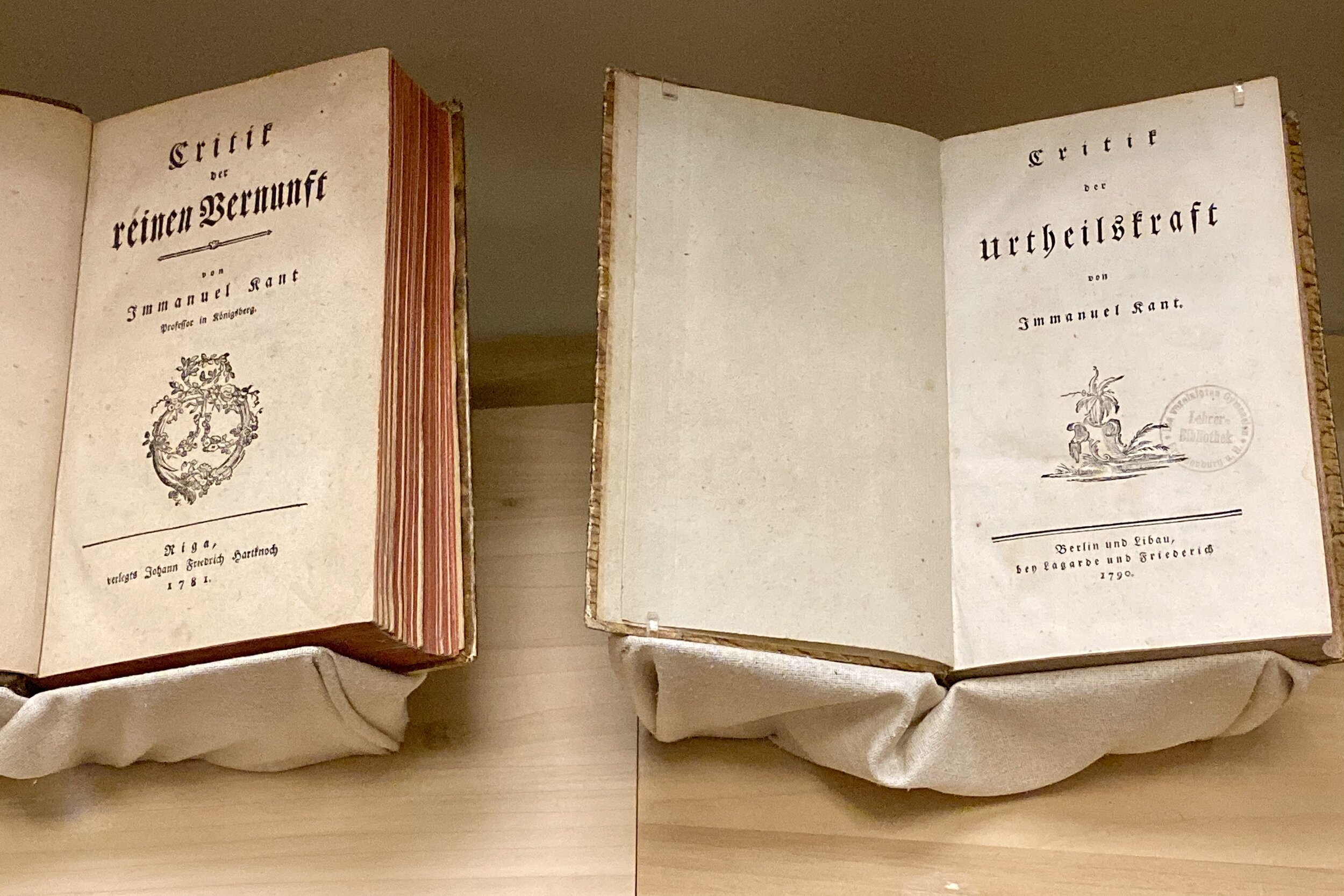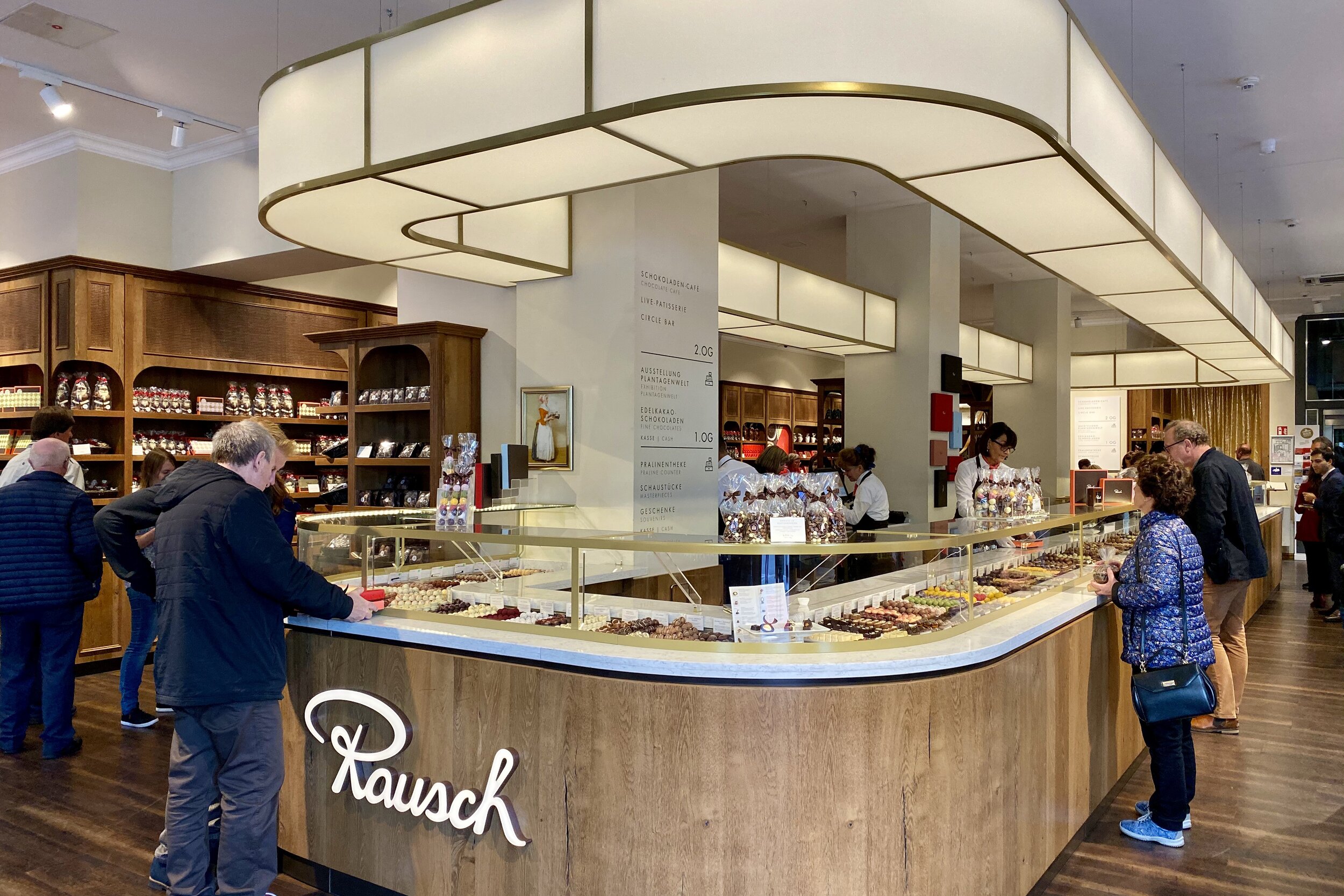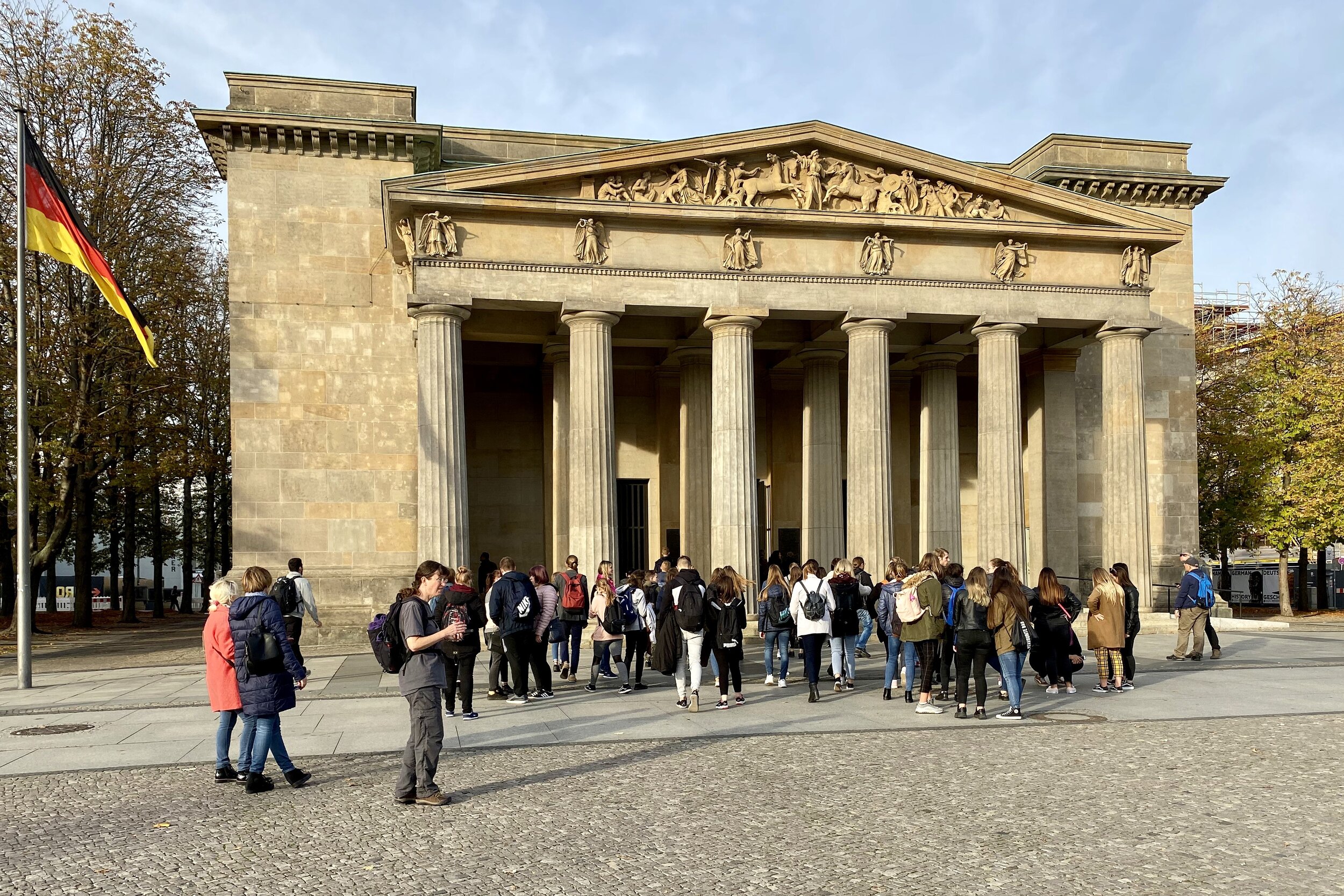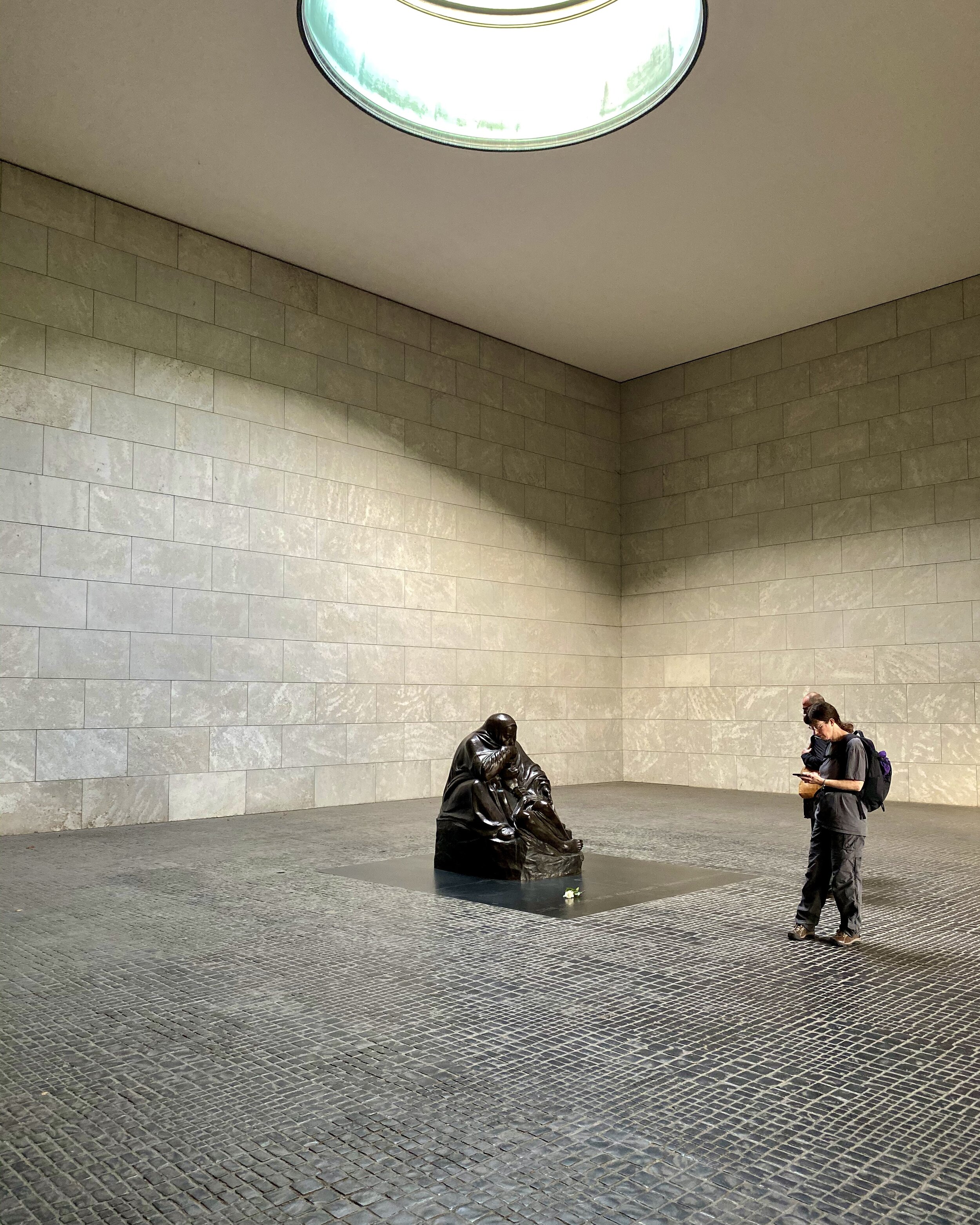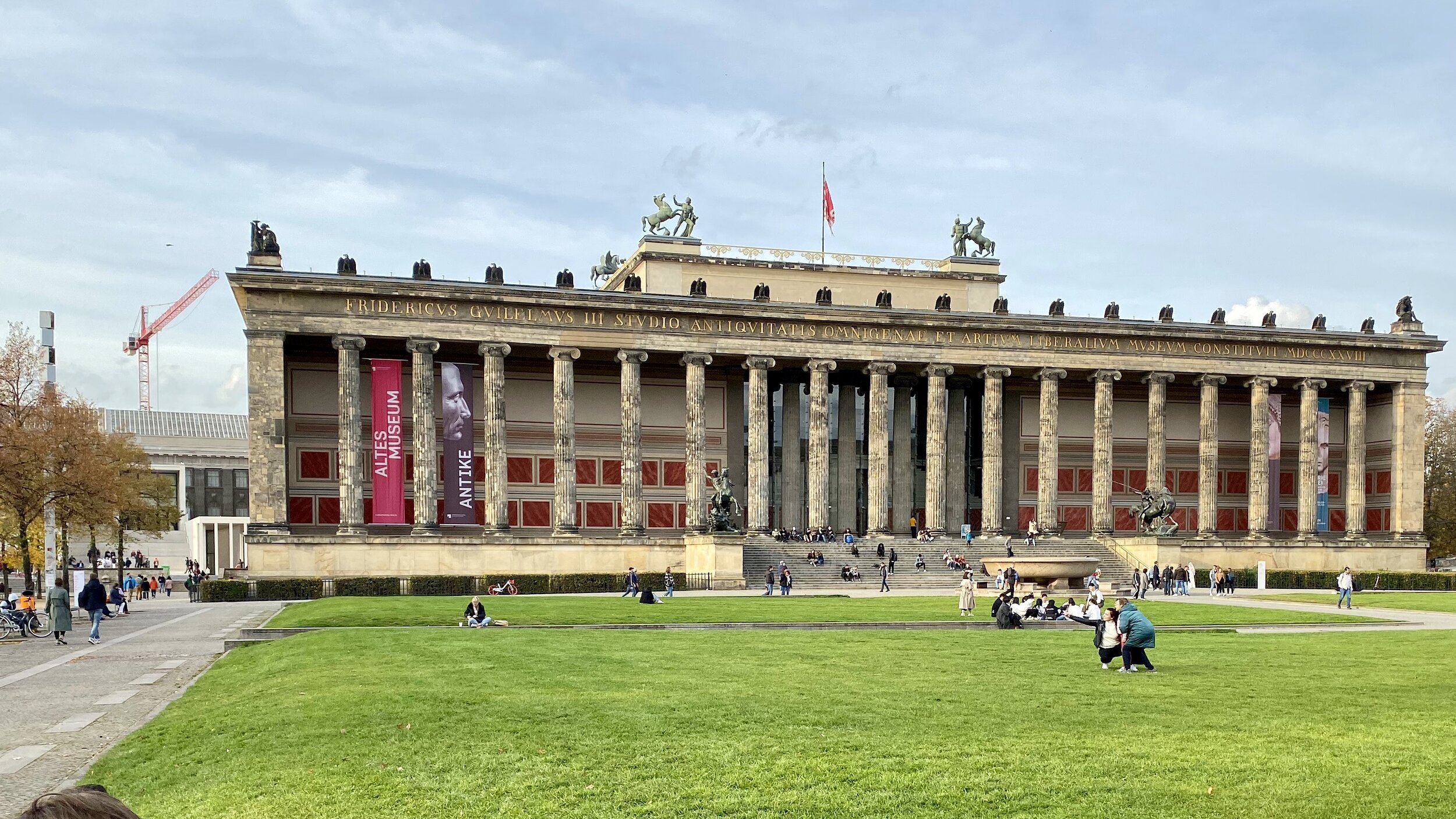Berlin, 25 Oct 2019
We went to the German Historical Museum which covers the years 500–1994, the Middle Ages through Unification. We then did a walking tour of Unter den Linden, which started at Pariser Platz to Museum Island, with a few diversions along the way.
We usually like to try out the breakfast provided by a hostel. Several places include a small amount for free, some (like on this trip) include a generous spread for a fee. The one in Berlin was €3, about half the cost of the others, so we figured there wouldn't be much, but still worth checking out. Yep, it was pretty sparse, but we did get enough to eat. We did decide, however, to do our normal grocery store routine and get breakfast.
While at breakfast, we were chatting with a man who was using the hostel as temporary housing. He used to live in Denmark but was now in Berlin. We didn't get more details, but he was working in green energy.
The other thing is we wanted to do laundry. Normally that means setting aside a few hours to wait for the machines, but at this hostel, you load up a basket and then they run it through the machines for you. When we arrived the guy behind the counter said they were down to one machine; he had ordered a replacement for the other one, but it wouldn't show up until Tuesday. But if we gave them laundry in the morning, that would give them the best chance of getting it done. So we did that; it cost a bit more than laundry at other places, but freeing up the time was worth a few euros.
The German Historical Museum opens at 10am, so we didn't head out right away., taking the opportunity to catch up on other things.
German Historical Museum
We arrived at the museum a few minutes before it opened, and there were several people (a few of them in groups) milling around the front. Once the doors opened, we got our tickets and then went to stash things in a locker. With that, we were on our way to the Middle Ages.
As the Roman Empire was crumbling, Germanic tribes were pagan and spoke German instead of the Latin of Western Europe. They converted to Christianity in 800 when Charlemagne united much of Europe as the Holy Roman Emperor. His successors were essentially the kings of Germany, and rules were put into place so Emperors were chosen by electors who were mostly German. One of the electors was from Brandenburg, which made Berlin a player.
The most powerful Holy Roman Emperor was Charles V, who ruled during the Renaissance and Age of Discovery. During that time, Martin Luther, the German monk, sparked the Protestant Reformation. On display was a Bible translated by Luther to everyday German, which helped establish German as it is spoken today.
There were several artifacts from the 18th century, such as a uniform worn by Frederick the Great, who brought the Age of Enlightenment to Germany. There were several books on display, including Immanuel Kant's “Inquiry”.
Next up was the French Revolution and the rise of Napoleon, who was defeated at Waterloo by England and Prussia. The hat and sword captured from him were on display.
In the late 19th century, Wilhelm I and his prime minister Otto von Bismarck came onto the scene, uniting several smaller countries Germany. Several spiked helmets were on display. Later, Wilhelm II became not only the king but emperor, creating the Second Reich (the first being the Holy Roman Empire).
Wilhelm II reigned over wealth and prosperity, but as WWI grew nearer, the working class was struggling. After the war, the German economy was in a bad state; the currency was extremely inflated, as 1,000,000DM notes were printed.
Germany between WWI and WWII had two political poles, the National Socialists (Nazis) and the Communists, with the former prevailing. Nazi dissent was suppressed forcefully, and propaganda was spread on how to identify minorities on sight.
There was a large section documenting the Nazis from rise to fall. They walked a fine line of downplaying the regime and beating you over the head of the atrocities which were committed. To be sure, the commentary was through the lens of current-day sensibilities, but care was taken to explain how easily people fell into line and accepted the regime. It was easy to make parallels to politics in today's world.
The museum then went into the construction of the wall, the lifetime of the iron curtain, the toppling of the wall, and Germany's reunification.
After we were done with covering 1,500 years of German history, we went to the exhibition hall which was designed by I.M. Pei. We just went to take a look at the architecture, and it was very intriguing. It was light and airy, with a spiral staircase that, once you get to the top level, looks like you could just keep going up were it not for the glass stopping you.
After that, we went to the café and had some lunch. That done, we did a walking tour of Unter den Linden.
Unter den Linden walking tour
Since we were actually near the end of our walking tour, we decided to take a bus to the beginning. It was the same bus we had taken the day before, and at that time there was a really bad traffic jam. It was so bad and the bus so full that the driver let people off if they wanted, so we got off a bit before the stop before our original destination. This day, the bus was a lot faster, and we got off at Pariser Platz.
Unter den Linden is a boulevard that goes through the center of what was Imperial Germany. It was lined with linden trees, thus the name of the street. Although linden trees can live for centuries, the original trees (some 250 years old) were cut down by Hitler, replace by Nazi flags. There was enough outrage that he had the trees replanted.
Unter den Linden once connected the royal palace (a bit past the German History Museum) to the king's hunting grounds, the Tiergarten just past the Brandenburg Gate (a bit west of where we started the walk). Aristocrats moved into the area so their palaces could be close to the king's.
The first stop was the Brandenburger Tor S-Bahn station, which was one of the ghost stations during the cold war. Trains wouldn't stop there since they opened to East Berlin East German guards were on the platforms as the western trains slowly passed by. The station has original tile work from the 1930s and Unter den Linden station signs (the original name) in Gothic-style script.
We then walked by the Russian Embassy, Europe's largest. A bit later we popped into the Ampelmann store. Ampelmann means traffic-light man, and it refers to the jaunty walk signals from the DDR era that became Berlin's unofficial mascot. Next was a showroom of Volkswagen-owned brands. We not only saw an Audi, Porsche, and VW, but a Bentley SUV, a Ducati electric bicycle, and a standalone electric drive chassis with batteries.
Going down Friedrichstraße, we got to Behrenstraße, and the area has uncontrolled intersections. Not like the neighborhood ones we have in Seattle, but actual urban intersections. You see cars, bicycles, and pedestrians wander into the intersection, slow down, and work out who goes first.
Further down Friedrichstraße was a department store with an atrium shaped like a huge glass dome. There was an inverted glass cone that looked into the food court in the basement; we went down to have a pastry. Around the corner was a Ritter Sport store. We bought some very inexpensive chocolate bars (€1.05 for normal bars, €0.75 for test flavors). There was also a…bar…where you could invent your own Ritter Sport. They'll make it for you and you can pick it up a half-hour later.
Gendarmenmarkt was next, with the Concert Hall for the Berlin Symphony in the middle and the matching French and German Cathedrals on either side. We were able to poke our head in the French Cathedral, but the rest was under construction. We did, however, go up one of the German Cathedral towers. Stairs wind around a large cylindrical atrium made of brick, which gave a very interesting look. Although the two buildings are called cathedrals, they are not the seat of a bishop; they're called Dom (cathedral) because it sounds like the French word dôme (cupola).
Around the corner was another chocolate store, this one for Rausch. There are replicas of the Brandenburg Gate, the Reichstag, and other popular buildings, but we made our way to the truffle counter to try a couple. They were the same price as Dallmayr Delicatessen in Munich, €79/kg.
Bebelplatz was next, which includes the former state library, which was funded by Frederick the Great. It is now the Humboldt University law school. Humboldt University itself is across Unter den Linden from Bebelplatz. Hotel de Rome is also on the square, housed in a historic bank building. St. Hedwig's Church was the first Catholic church in Berlin built since the Reformation. Lastly is the Berlin State Opera building. Frederick thought the arts were essential to a well-rounded populace, so he moved the opera house fro inside the castle to Bebelplatz. In the center of the square is a book-burning memorial, a glass window in the ground looking into a room of empty bookshelves. It's at the location where forbidden books were burned.
We were working our way back to the German Historical Museum, and just before it was the Neue Wache, which used to be barracks for the bodyguards assigned to the Hohenzollern palace across the street. Each successive regime used the Neue Wache to honor its soldiers. After the Berlin Wall fell, it was converted into a national memorial.
We ended our walk on Museum Island, with the Lustgarten taking center stage. It's been both a park and a military parade ground in the past. Hitler enjoyed making speeches from the steps of the Altes (Old) Museum, overlooking the Lustgarten. Behind the Altes Museum is the Neue (New) Museum, the Pergamon Museum, the Old National Gallery, and the Bode Museum. The most massive building on the island is the Berlin Cathedral, built during the reign of Kaiser Wilhelm II.
Museum Island sits in the Spree River. Boats aren't allowed to drop anchor since there are still unexploded WWII bombs in the river (as well as scattered around the city). Several are found at construction sites each month.
Rest of the day
We found a grocery store to pick up dinner and breakfast items for the next day (we spent a bit less than the €6 of the hostel-provided breakfast). We then waited for a streetcar to go back to the hostel. The reader board said there was a delay, and while other streetcars came on time, ours kept being pushed back a minute at a time. It finally arrived, and then we ran into traffic. It took several minutes to get past one particular block, but once past that, it was a quick ride.
When it was time for dinner, we went down, figuring we would eat and read. There was a couple there, and the first words from the wife were asking whether we spoke English. She was very relieved that we did, and we ended up talking with them for the whole meal. They're a retired couple originally from Providence, RI, but now live in Columbus, OH. They enjoy traveling for weeks at a time, mostly going when they find inexpensive flights. As we were eating, a man from Los Angeles who was originally from China joined us. He spoke very little English, but he had a portable translation device that worked completely off-network. It was impressively quick, and the translations sounded very natural.
After dinner, we all said our goodbyes and quietly finished out the evening.




